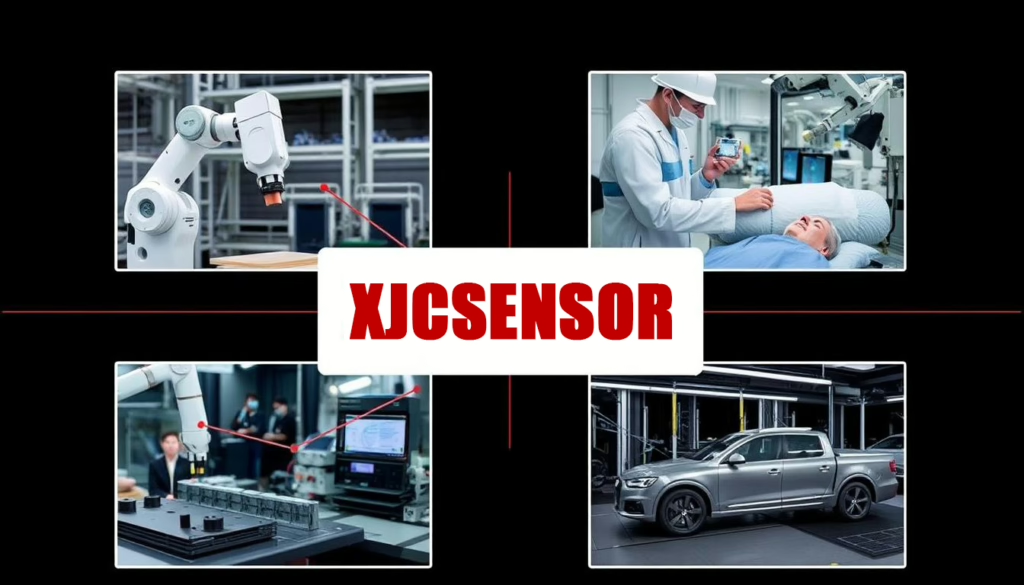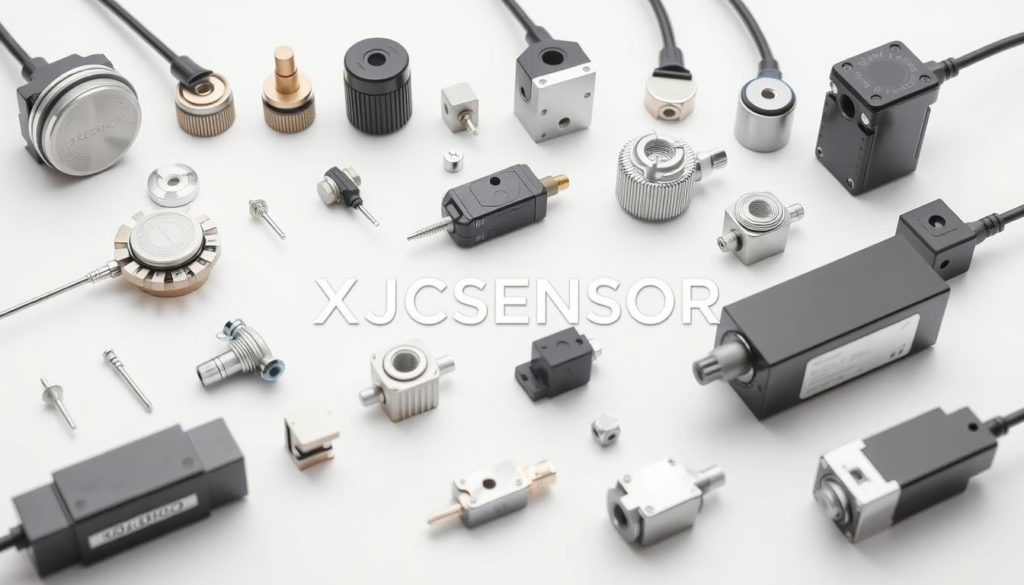Understanding the right force sensor for your needs is key. These sensors are vital for checking performance and safety in various systems. They belong to the force transducers group and change force into an electrical signal. This is useful in areas like manufacturing, cars, medical devices, and electronics. The right sensor is picked based on environment, Force Sensors Types, accuracy, and force range.
This part talks about what force sensors are and why they’re important today. XJCSENSOR uses force sensing tech in different areas to make sure force measures are reliable and precise. Picking the correct sensor is crucial for exact data. This is especially true in aerospace, medical fields, and industrial automation.

Key Takeaways
- Force sensors convert applied force into measurable electrical signals.
- Selection of force sensors is based on environment, type of force, required precision, and force range.
- Force sensors are crucial in industries such as aerospace, medical, and industrial automation.
- Different force sensors include strain gauge, piezoelectric, capacitive, optical, and magnetostrictive sensors.
- XJCSENSOR provides high accuracy and durability in their force sensing technologies.
Force Sensors Types
The field of force sensors is vast and varied. Many different force transducers cater to various needs. By understanding how force sensors are classified, we can pick the perfect one. This ensures precise measurements and the best performance. Let’s explore the main types of force sensors.
Strain Gauge Sensors
Strain gauge sensors are widely used. They work based on a strain gauge which measures object deformation. Known for their accuracy and reliability, these sensors are common in industrial settings.
Piezoelectric Sensors
Piezoelectric sensors measure force through the piezoelectric effect. They generate an electrical charge in response to a mechanical load. Perfect for dynamic force measurements, they’re often found in medical and aerospace fields.
Capacitive Sensors
Capacitive sensors work by detecting changes in capacitance. Force changes the distance between two plates, altering capacitance. With their high sensitivity, they’re used in touchscreens and load systems.
Optical Force Sensors
Optical force sensors measure force with light modulation. They detect changes in light due to force. Used in precision engineering and bioengineering, they offer high-res measurements.
Magnetostrictive Sensors
Magnetostrictive sensors use the magnetostrictive effect. Mechanical stress changes a material’s magnetic properties. Durable, they’re ideal for tough environments and heavy-duty use.
For deeper insights into sensor load technology and various force transducers, visit this resource. It provides valuable information on accurate force measurement systems.
Conclusion
Understanding different force sensors is key to picking the right one for your needs. Strain gauge sensors are great for measuring stress. Piezoelectric sensors are quick to respond, making them ideal for capturing dynamic changes.
Capacitive sensors stand out for their high sensitivity and ability to work well in various environments. Optical force sensors measure without touching, and magnetostrictive sensors work well in tough conditions.
Each sensor type has its own perks. They’re useful in fields like industrial automation, medical equipment, cars, or gadgets. Using the correct force sensors technology improves efficiency, safety, and system performance.
Selecting a good sensor affects measurement quality and system dependability. At XJCSENSOR, we offer a wide range of sensor solutions. We fit modern needs perfectly.
Our force sensors technology is designed for precise, efficient control. This helps clients meet their goals. As technology progresses, choosing the right sensor becomes more crucial. We support our customers with high-quality sensors aimed at accuracy and reliability.


